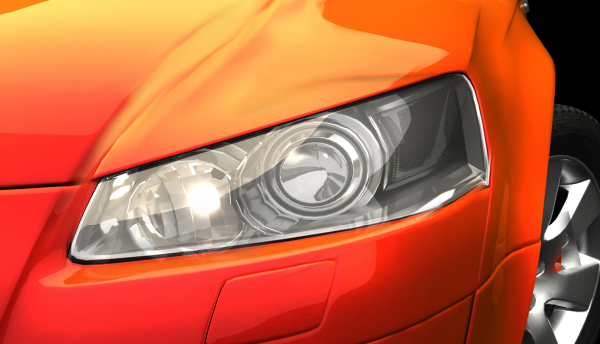
“We take steel, raw steel, and turn it into a car. They have no idea what they’re getting into if they get into that.” That was how former GM CEO Dan Akerson described the rumours that consumer electronics company Apple was developing an electric vehicle this week.
The team is reportedly working on robotics, and metal and materials consistent with vehicle manufacturing. Apple often explores potential products and technologies, going as far as building prototypes that will never reach the market. However, people familiar with the development told reporters the size of the project team and the seniority of executives involved in this project suggest that Apple is serious. The company's executives have flown to Austria to meet with contract manufacturers including Magna Steyr, the complete vehicle assembly unit of Magna. Both Apple and Magna have declined to comment on the report.
From vertical to horizontal
One of the challenges that Apple would face is the difference in working in a sector where it is highly vertically integrated, to the automotive industry, which is traditionally far more horizontal in its relationships. Apple’s relationships with its existing suppliers are seen as adversarial in the extreme. When Apple supplier GT Advanced Technologies went bankrupt in October, it exposed terms onerous to the extent that Apple does not negotiate with its suppliers. Would current automotive suppliers accept what are essentially dictated terms, even if they come with potentially lucrative returns?
Apple CEO Tim Cook is renowned for his mastery of supply and logistics chains, so much so that Apple is now able to announce a product and start selling it on a global scale within weeks with relatively few constraints. However, the automotive supply base is much more horizontally integrated and the emergence of giant suppliers has increased this. While Apple’s 2015 supplier list details nearly 200 suppliers at over 750 global locations, most major global OEMs work with over 1,000. In an interview with SupplierBusiness this January, Hau Thai-Tang, Group Vice-President, Global Purchasing, Ford said that “My predecessor set the target of 750 suppliers and that was really important during the [financial] crisis […] we are no longer working towards a specific target with regards to the number of supplier partners.” This is a huge increase over current levels, but Apple are by no means the only ones investigating the potential fusion of electronics and automotive.
If reports are correct, Apple will be the second information technology company, after Google, to consider the automotive business. In 2014, Google unveiled a prototype of a self-driving car and is looking for partners to bring its self-driving cars to market. Google has already confirmed Bosch (power electronics and long-range radar); ZF Lenksysteme (steering gear); LG Electronics (batteries); Continental (automotive electronics and tyres) and Roush as its partners.
A number of Apple’s suppliers have a crossover into the automotive supply base; 3M, Alps Electric, Asahi Glass, BYD, Eaton, Flextronics, Henkel, Infineon, LG Chem, OMRON, Renesas, SABIC Innovative Plastics, STMicroelectronics, Sumitomo Electric, TE Connectivity and Toyoda Gosei all appear on Apple’s supplier list and all have automotive operations that the company could exploit.
Years away, but the rumours show a new front for suppliers
Though the speculation is fresh and very tenuous at this point, it does point to larger trend within the industry. Executives at Apple have always stressed that for every finished product that they put to market, there are hundreds of prototypes and potential ideas that fall by the wayside and an Apple car may be one such example. Car making is capital expensive, costing millions of dollars for design, tools, production and certification, and automakers need an established and reliable supply base from which to source components..
But suppliers will already understand the pressure from established players in Silicon Valley, as it becomes increasingly clear that the growth sectors of the industry lie in applications such as infotainment, driver assistance systems and connectivity; things that will require advanced software expertise. Google is already comfortable with licensing its software as it has done with computers and smartphones.
As Google, Microsoft and Apple extend their participation in the mass market of infotainment systems, the threat to existing automotive tier ones such as Continental, Harman and Delphi is clear. All are already rethinking their strategies, with one solution being to offer differentiated products. There’s also a growing trend of a growing trend of integrating internet-based services into driving experience. Google, for instance, is working with automakers including Honda and General Motors (GM), to come out with its own such offering. Automakers, too, are increasingly working on similar products. Audi, for instance, plans to roll out cars as soon as next year with large LCD displays integrated into the dashboard.
Sensors
The other application that will be greatly affected by software in the next few years is safety systems. Underpinning safety systems will be the continued growth in automotive electronics and sensors. Anti-collision sensors including radar, cameras, ultrasound and lidar are expected to see a big increase in both shipments and fitment rates because of the growing awareness of driving safety from consumers, legislators and vehicle manufacturers. IHS Automotive predicts that the global sales of collision avoidance sensors will touch the USD9.90 billion mark in 2020, up by about 150% from USD3.94 billion in 2014; with Bosch and Continental already taking a large share of this market.
Carmaker CEOs may look at Akerson’s comments and nod in agreement. Any projects Apple and Google are working on right now are unlikely to come to fruition until 2020 at the earliest, and to start with only in relatively small volumes compared to the rest of the industry. But for suppliers, the competition is on for ownership of the next generation of technology in cars.








